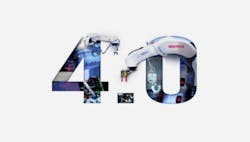The four types of Industry 4.0
Manufacturers embracing Industry 4.0 fall into four areas: standard, automated, intelligent and resilient. While each of these leverage smart technologies in different ways, it’s those who understand how and why to marry data with actionable insights who raise bottom lines. And the best part is it doesn’t matter where your factory is in the Industry 4.0 journey as long as there is companywide commitment to a better understanding of internal data and how to use it advantageously. That's not as simple as it sounds.
On average it takes 12-18 months to transform from a standard factory into a resilient factory. Today’s standard factories are lean, and the first steps these companies take in their Industry 4.0 journey is implementing a Manufacturing Execution System (MES) or focusing on value stream collaboration. Perhaps you're at this stage already. These manufacturers are beginning to use alerts, create reports and understand what the exact problem is related to a machine and the actions needed.
Whereas the next step—the automated factory—is already using robotics and robotic processes; more sophisticated, leveraging elements of machine learning and understanding predictive maintenance. Here companies can answer the why: Why is my machine going down at a specific time every day? Or, if I make this change, what happens next?
The ability to predict when something needs to be ordered, or when something will fail, creates new subscription-based business models that are a value-add for OEMs to create intelligence around solutions and create better solutions for customers to maximize the use of equipment and uptime. Perhaps you're doing this already.
A brief example: A medical-device manufacturer experienced ongoing unplanned downtime on a machine that put stainless steel through a press where the tolerance is smaller than a human hair. A sensor to monitor ambient temperatures identified a disturbances at 9 am and 2 pm daily, precisely when the machine would go down. They determined a correlation with break times—someone opening the door to go outside for a break is what caused the machine to go down, but it was the sensors and insights that enable it more uptime now.
Intelligent factories are experimenting with design optimization and have moved from predictive to prescriptive insights and actions. This includes real-time adaptive analytics, self-learning and correcting machines, and data-driven machines and processes. And finally, the industry leaders—the resilient factories—are autonomous in nature and use technology to take an average worker and turn them into an advanced worker. Perhaps you are one of them.
Manufacturers need to make initial smart investments to get a better return on smart manufacturing technologies, including the aforementioned sensors, a component of IIoT capabilities that open the throttle on operational and performance data. Applications include insights into current equipment status (such as in-cycle, idle or offline), job progression and per-piece run rates. This data is used for historical comparison across machines, parts, shifts and employees. By weeding out the issues that decelerate workflows, manufacturers regain minutes, hours and even days of productivity that can be converted into more capacity.
Sensors, ERP systems and other tools are generating more data today than ever before. Business-intelligence tools and dashboards allow manufacturers to channel multiple streams of data into a single source of truth. To get the most from these tools, manufacturers should first build out specific use cases for what information they need to manage their business. As the data proliferates, manufacturers will need to invest in automated solutions to pull data, transform it, normalize it, cleanse it and make it available to end users. The benefits from data and dashboards really kick in once the infrastructure is aligned and unified.
There are many reasons to automate and many areas throughout a business in which to automate. While production lines naturally lend themselves to automation, ERPs and other software tools add tremendous value by removing time-consuming and low-value tasks such as data collection and report generation. To get the best return, look for areas that remove effort, take out risk, improve machine in-cycle time or reduce variances. Every opportunity to remove simple, straightforward manual processes—and to deploy employees to higher-value functions—is an opportunity to expand capacity, improve productivity and increase revenues.
Predictive analytics and machine learning enable manufacturers to identify patterns and reveal insights about all stakeholders, products and production that would otherwise remain hidden. By keying in on what sensor values equate to better production output, manufacturers reduce variance and increase productivity. When they are applied as part of a larger strategic plan, intelligence packages pay for themselves in months, not years, by revealing opportunities to run shops smarter, faster and better.
The key, as with all Industry 4.0 technologies, is to make investments with an eye on the bigger picture. To get the most out of a predictive-analytics package, one must first pinpoint a problem to solve and have a robust IT backbone and automation capabilities to back it up.
No matter which of these stages a manufacturer falls under, it begins with transforming data into intelligent actions. You can make a factory smart with connected assets, predictive suggestions, strategic robots and self-optimized actions, but the next iteration of manufacturing forward is creating a smarter supply chain, providing visibility, alerts and predictive outcomes. When this is accomplished, companies increase productivity, create additional capacity, minimize unplanned downtime and embody a mindset of making every minute count. Hopefully, you are one of these companies.
By Mark Stevens, principal in Wipfli’s manufacturing and consulting practice, and Brett Polglaze, Wipfli’s project manager and business analyst
